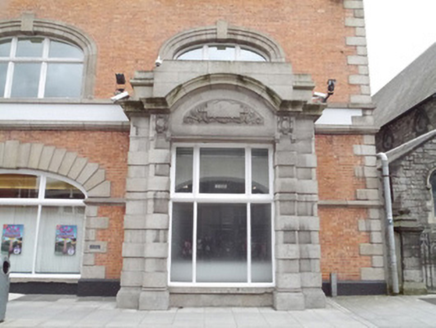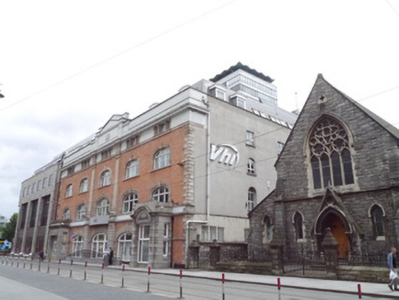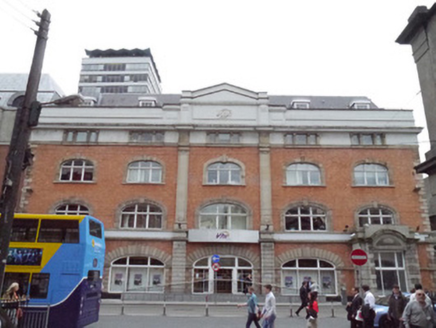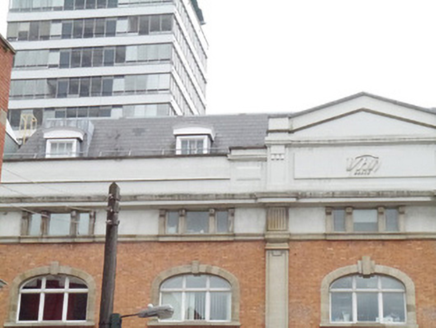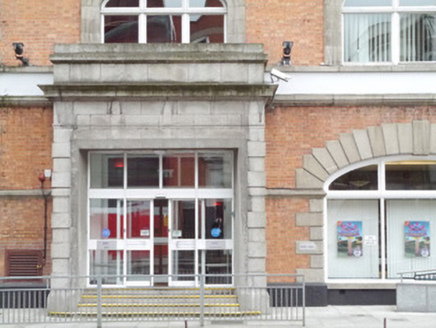Survey Data
Reg No
50060585
Rating
Regional
Categories of Special Interest
Architectural
Previous Name
Dunlops
Original Use
Office
In Use As
Office
Date
1915 - 1920
Coordinates
316198, 234562
Date Recorded
03/09/2014
Date Updated
--/--/--
Description
Attached five-bay three-storey office building with dormer attic, originally built c.1900, reconstructed 1918. Artificial slate roof with lead ridge, replacement dormer windows rising behind parapet wall, and with modern service/lift towers to rear. Concealed rainwater goods. Front elevation has Flemish bonded red brick walling with ashlar granite dressings, including stepped quoins, Giant order pilasters to breakfront central bay rising from first floor over rusticated ground floor piers. Diminished attic storey is smooth rendered, with granite cornice over, and with tall cast concrete parapet gabled over breakfront. Elliptical-headed window openings with moulded granite architraves to first and second floors. Granite voussoirs and reveals with impost moulding to ground floor openings, with timber mullion and transom windows. Horizontal rectangular windows with stone mullions to third floor attic storey, with continuous granite sill course. Plain fenestration to secondary elevations. Elliptical-headed door opening to middle bay and additional entrances to each end of elevation, latter set in projecting classically-styled porches with rusticated granite walling, western porch having segmental pediment and eastern having corniced entablature, all with uPVC replacement doors. Street fronted, having recent steel railings to pavement containing ramped accessways.
Appraisal
An early twentieth-century commercial building prominently located on Abbey Street Lower and one of a number of buildings of this period in the vicinity. Recent refurbishments have caused the loss of some original fabric, but the overall form is intact, and is representative of the transition from classical to more streamlined modern detailing. The wide windows exemplify new technologies in construction, enabling a greater window to wall ratio than was previously possible, and therefore represent a departure from the traditional Dublin brick terrace. The building adds to the variety of the historic streetscape. Casey(2005) attributes rebuilding to Harold Gibbings.
